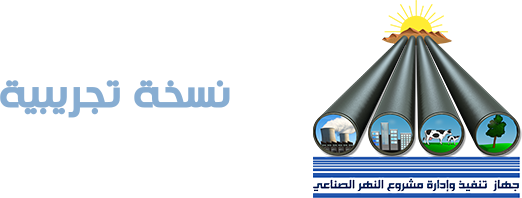This System aims to produce and transport (2 million) cubic meters of groundwater per day, and it can be increased to (2.5 million) cubic meters per day from the fields of wells in the Jabal Hasouna region to provide the cities of western Libya with fresh water, as the system branches out two middle paths to supply the cities of (Bani Walid , Tarhuna, Gharyan) and the eastern cities of (Jabal Nafusa, Jendouba, Al Asabaa, Gawalish, Kikla, Yafran, Rayyanah, Rheibat, Zintan, Jadu, Rajban) and the eastern route to supply the cities (Misurata, Tawergha, Tajoura, Zliten, Khums, Souq Al Khamis, Tamina, Al-Dafniyeh, Qasr al-Akhyar, Garabulli and to the city of Tripoli in the west), and there is an agricultural path from Tripoli to the Bir Tarfas area for agricultural purposes
The (Hasouna / Sahel Jefara) System started partially at the end of August 1996 with a capacity of (250 thousand) cubic meters until the daily production rate reached about (1.2) million cubic meters per day, and the total water produced until 12/31/2016 AD (4.58 billion) cubic meters, with a monthly average of (30 million) cubic meters.
The implementation of most of the System components has been completed, which can be summarized as follows:
Fields of water wells in Al-Hasouna, which includes (473) production wells and (31) monitoring and testing wells.
• Four water pumping stations in each of the wells' field sat east of Jabal Hasouna, northeast of Jabal Hasouna in the north, and northeastern Jabal Hasouna in the south, in addition to a pumping station in Tarhuna.
• A system of pipelines for collecting well field water with diameters ranging from (300 mm) to (4 meters) and a total length of approximately (753) kilometers.
• The main pipeline is (983) kilometers long and has diameters of (3.6 meters) and (4 meters).
• Six stabilization and pressure reservoirs in each of the well field areas (AlShweeref, Tarhuna, Sidi Essid, Abu Aisha and Al Garabulli)
• Two flow control stations in AlShweeref and Tamale Valley.
• The communication system by fiber optic cable, starting from the well fields area and extending across the middle and eastern paths of the system, meets the Qasr Bin Ghashir area, and is linked to the General Post's communication system in both Brak in the south and Tripoli in the north, in order to transmit control signals to all the system’s facilities and contribute to raising the capacity and integration of the General Communications Network of Libya
The monitoring and balance-control system between supply and demand, and it includes a main control room in Qasr Bin Ghashir Support Center, in addition to (4) sub-control rooms at pumping stations
• Electric power transmission and distribution system, which includes (11) power stations.
Operation and maintenance support centers, including (3) centers for operation and maintenance support, distributed over the following areas:
• Qasr Bin Ghashir area.
AlShweeref area.
• Hasouna area.
The System was initially received during the year 2006 AD, bringing the current available productivity to 1.3 million cubic meters of water.
The System’s accessories include the following main links:
A- Tarhuna - Abu Zian Link
It aims to transport about (800 thousand) cubic meters of water daily through a pipeline of (82) km long from one of the feeding holes in the middle path of the system to the Abu Zian Reservoir using (2) main pumping stations.
Most of the System's work has been completed, and initial receiving and initial operating trials are underway
B- Tripoli-Well Tarfas link
It aims to transport an amount of (1.2 million) cubic meters per day through a pipeline of (62) km long, in addition to establishing (9) reservoirs with a capacity of (86,000) cubic meters each and distributing them to the areas located in the path of the line




